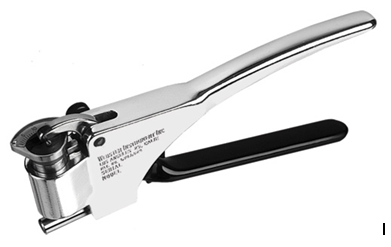Webster Hardness Tester

A Portable, Fast, Accurate Hardness Gauge Available in Several Models for Testing Materials such as Aluminum, Brass, Copper and Mild Steel. The Webster Hardness Tester will quickly identify tempers and test a variety of shapes that other testers cannot check, such as extrusions, tubing, and flat stock. .
Uses and Applications:
• For identifying heat-treated from non-heat-treated parts
• Provides correlation between a bench mounted hardness tester and the production line
• For segregating materials in stock
• For differentiating between soft or work-hardened material
• For identifying parts made from improper or substandard alloys
• Checking for proper heat-treatment response
• Useful in conjunction with stationary laboratory hardness testers. Gives a rapid 100% check on parts which would consume many man-hours with slower operating test equipment
• Can be used on assemblies which cannot be brought to the laboratory
It’s used especially to test the static compression for rubber. Place one standard specimen between parallel flat plates, revolve the screws then compress it a certain range of percentage and then put into the oven under the specified temperature for a certain time period then take it off cooling for 30 minutes to measure its thickness for calculating its permanent deformation rate.
Operations:This sectional view shows the basic design principle of the Webster Hardness Tester. The different models vary only in penetrator and load spring design. These combinations give the ability to test a wide range of hardnesses and metal.
The penetrator housing, which contains the penetrator and load spring, slides vertically in the frame of the tester when pressure is applied to the handles. Only sufficient pressure is needed to "bottom" the lower face of the housing against the work. Resistance of the work to the penetrator causes the penetrator to recede into the housing against the spring pressure. The degree of penetration on the test specimen is indicated on the dial indicator sitting on top of the housing assembly. The load can be varied by adjusting the nut above the load spring, permitting the dial reading to be easily corrected against a test block of known hardness.
A penetration of 0.010 inch produces a full scale reading on the dial indicator. Therefore materials in the softer hardness range should be of sufficient thickness so that the anvil will not influence the test and produce an "anvil effect". In general, soft materials under 0.025 - 0.030 in thickness will not give true readings.
Different models:
Webster hardness testers are available in the following three models:
• Model B for Aluminum Alloys
• Model B-75 for Brass and Mild Steel
• Model BB-75 for Copper
.
